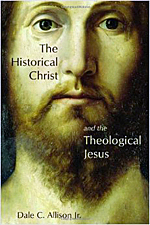Will the Real Jesus Please Stand Up?

✝️ Somewhere between the Sea of Galilee and the Pauline Epistles, Jesus of Nazareth underwent a dramatic rebrand. The barefoot rabbi who preached in parables and dined with tax collectors and other deplorables was quietly replaced by a cosmic Christ with a theology degree and a Roman mailing list. The transformation was so seamless, so cleverly franchised, that few noticed the original Jesus had left the building.
Credit St. Paul—apostle, tent maker, and self-appointed director of messiah marketing. Though he never met Jesus in the flesh (a minor HR oversight), Paul claimed exclusive rights to the risen version. His letters, written in the tone of a man who’s never wrong, introduced a Jesus who spoke fluent doctrine and had strong opinions on circumcision, women, and the afterlife. Gone was the cryptic sage who said things like “the last shall be first.” In his place stood a theological construct optimized for Gentile consumption.
Paul’s Jesus didn’t just turn the other cheek—he turned it into bullet points. ●Faith over works. ●Grace over law. ●Salvation by subscription. It was the first-century equivalent of taking a grassroots folk singer and turning him into a Vegas residency.
Meanwhile, the historical Jesus—let’s call him “OGJ”—remained stubbornly Semitic, suspicious of empire, and maddeningly vague. He healed the sick, flipped tables, and told stories about mustard seeds. OGJ never once mentioned original sin, penal substitution, or the importance of tithing via direct deposit.
So who’s the real Jesus?
In a recent Netflix celestial special, Will the Real Jesus Please Stand Up?, hosted by the Archangel Gabriel, contestants included:
- Jesus of Nazareth–dusty, cryptic, fond of fig trees.
- Jesus Christ™–shiny, systematic, endorsed by theologians.
- Jesus the Life Coach–wears Yeezys and Birkenstocks, preaches abundance.
St. Paul made a surprise appearance, minus his horse, waving a copy of Romans and insisting, “Without me, he’s just a carpenter with a flair for metaphor.”
In the end, all versions stood up, speaking in tongues. Fights broke out in the audience, and garments were rent. God sighed and muttered, “We’ll fix it in the sequel.”
Until then, we are left with a paradox: a messiah who preached humility, and a religion that built cathedrals. A man who walked among the poor, and a movement that canonized power. Somewhere, the real Jesus is still flipping tables—if only we’d let him.
